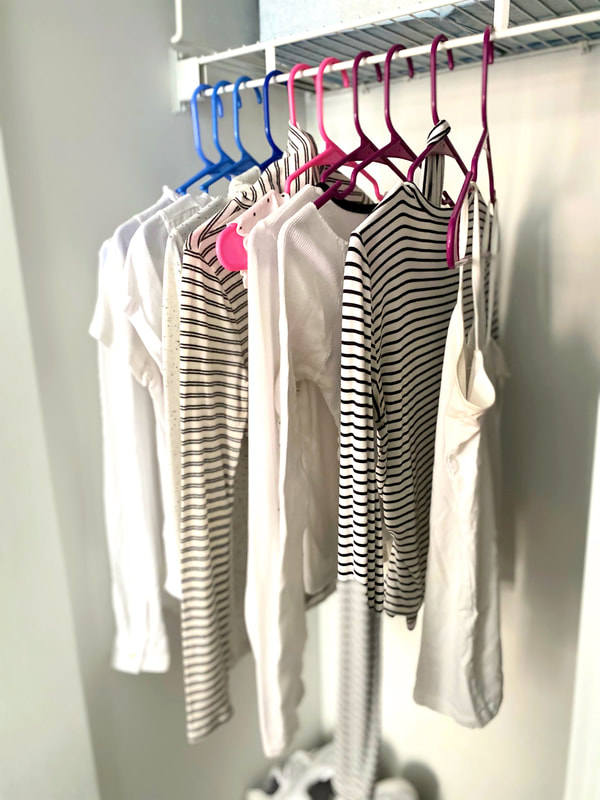|
Image Credit: Lindsay Garbacik for The Campus Trainer Over the years, the rule about not wearing white after Labor Day has gotten its share of criticism and increasing lack of support. This disbelief in a rule that no one really seems to know much about has seemed to grow among many Americans, seemingly in the last decade or so.
Labor Day became an official holiday in the late 1800s when Congress approved it as a national holiday. However, Reader’s Digest reports that the rule of not wearing white after Labor Day didn’t become popularized in mainstream culture until the 1950s, with women’s magazines declaring it a fashion rule. However, the reasoning behind this rule is theorized to stem from a few reasons, some of which are based on practicality. According to Time magazine, one of the main theories in regards to the reasoning behind the rule is due to white being a color reserved for the summer/warmer months, because it’s lightweight and easier to stay cool in compared to darker colors, something that was especially important in the days before air conditioning. Handling the heat through lightweight colors and fabrics was even more important in the early- to mid-1900s, as people often wore what many Americans today would label as “more formal” clothing. Within the Time article, author Laura Fitzpatrick highlights that people didn’t normally wear clothing that is popular today to stay cool, like T-shirts and halter tops. Another popular theory behind the origin of the rule stems from classism in the 20th century. An article by Business Insider highlights how white was used as a symbol to establish class and status. Essentially, white is a hard color to keep clean, and thus the wealthy could wear it as they didn’t have jobs that caused them to get dirty or ruin their clothes. This was very prevalent in large cities like New York, where upper-class families could afford to leave the city for the summer and retreat to summer homes—where they could wear lightweight clothing and colors without the fear of getting them dirty in the city. While this rule solidified itself in importance and in popular culture in the ’50s, its prevalence is still seen today, however, it seems to serve as more of a guideline than a hard rule. For years, respected fashion publications/websites, designers and brands have been highlighting fashion-forward ways to wear white post-Labor Day celebrations. This month, Vogue published an article addressing what they consider to be an antiquated rule, and suggested a variety of different ways to incorporate white into one’s outfit as we approach the fall and winter seasons. University of Maryland alum and founder of the on-campus fashion publication Monumental Magazine, Erin Garry, finds the rule outdated, saying, “I’m all for wearing white after Labor Day. I especially think a winter white look is super chic, or pairing white denim with warmer colors like navy, camel, brown, etc. I think the rule is definitely outdated. As long as you’re dressing appropriately for the season, I say go for it.” Jenna Cohen, a junior at Maryland majoring in journalism and minoring in leadership studies, agrees with Garry. Cohen, who is a member of Gamma Phi Beta at Maryland, wore a white dress along with the rest of her sorority during recruitment last winter. “We decided to wear white for the final round of recruitment last year, because we knew that with the whole chapter in white, it would look really bright and inviting as potential new members were coming in. I definitely think it’s fine to wear white after Labor Day,” says Cohen. While many influential platforms and people in the fashion world are openly against this rule, it is likely one that will continue to persist in society for the next couple of decades. Regardless of what anyone says, whether they’re Vogue or not, it’s hard to change public opinion,societal norms or ways of thinking right away. The reason I say the next few decades, is because there are still going to be people and outlets that believe in the rule, especially among older generations who have spent most of their adult life following it. However, with its decreasing popularity and prevalence in society, younger generations will be less likely to grow up being aware of such a rule, and thus less likely to follow it or believe it to hold much importance as an adult. As someone who is a part of Generation Z, in my experience, this notion of not wearing white after the holiday has been more of a suggestion than a steadfast rule that must be followed. To me, the rule makes sense. Lighter colors are often associated with warmer weather, like the spring and summer seasons, while darker colors are typically associated with colder weather in the fall and winter. That being said, will there be people who stop wearing white after Labor Day because they still believe it to be a valid rule? Yes. Will there be people who keep wearing white after Labor Day because they don’t care about fashion rules? Yes.
0 Comments
Leave a Reply. |
AuthorRiley Brennan ArchivesCategories |
|
|
Learn more |
© COPYRIGHT 2020. ALL RIGHTS RESERVED.
|

 RSS Feed
RSS Feed